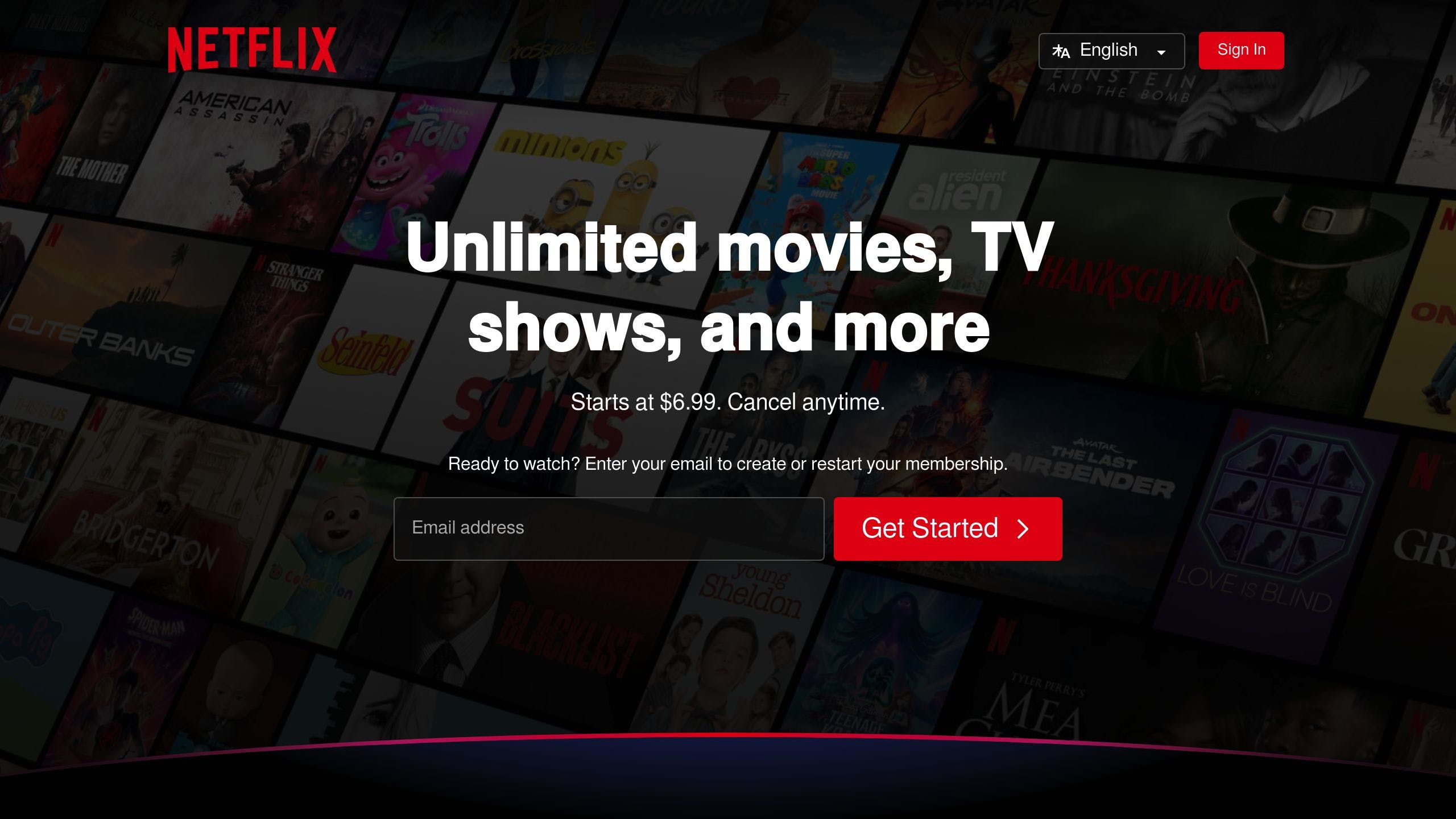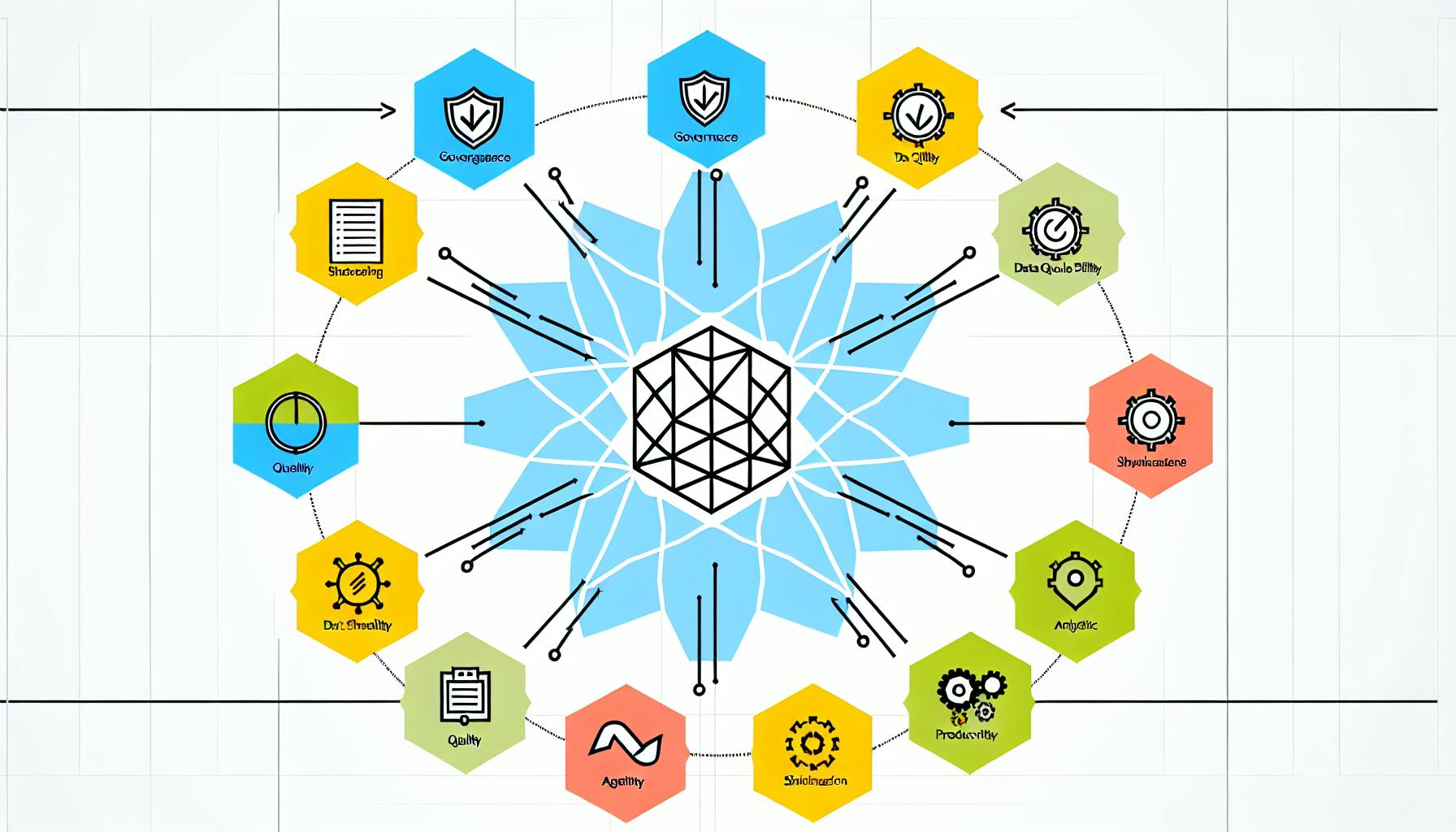Multi-cloud is reshaping IT infrastructure. Here's what you need to know:
- What it is: Using services from multiple public cloud providers
- Adoption: 62% of companies use multi-cloud, 18% are moving towards it
- Key benefits: Best tools for each job, risk mitigation, cost savings
| Benefit | Drawback |
|---|---|
| Flexibility | Management complexity |
| Disaster recovery | Security challenges |
| Cost optimization | Skill gaps |
| Best-of-breed services | Performance monitoring |
Top tips for success:
- Align with business goals
- Choose providers carefully
- Implement strong security
- Centralize management
- Automate processes
Multi-cloud is becoming the norm, with 89% of IT pros having a strategy in place. It offers powerful advantages but comes with challenges. By understanding the basics and following best practices, businesses can leverage multi-cloud to stay competitive and efficient in today's rapidly evolving tech landscape.
Related video from YouTube
2. Multi-Cloud Basics
2.1 Multi-Cloud vs. Hybrid Cloud
Let's clear up a common confusion:
- Multi-cloud: Using multiple public cloud services (AWS, Google Cloud, Azure)
- Hybrid cloud: Mixing public cloud with private cloud or on-premise setup
Think of it this way: Multi-cloud is like choosing different streaming services. Hybrid cloud? That's like combining Netflix with your DVD collection.
2.2 Multi-Cloud's Evolution
Multi-cloud has come a long way:
- 2023: 87% of IT pros had a multi-cloud strategy
- 2024: This jumped to 89%
Why the change? Specialized IaaS providers are shaking things up, giving AWS, Google, and Microsoft a run for their money.
2.3 Multi-Cloud in Action
Here's how businesses are using multi-cloud:
1. Disaster Recovery
Big Cartel spreads its bets across multiple providers. Why? To avoid putting all their eggs in one basket.
"A single storage provider was a single point of failure we grew uncomfortable with." - Lee Jensen, Big Cartel's Technical Director
2. Cost Cutting
Simmer.io mirrors data to Backblaze B2. The result? Lower egress costs.
3. Flexibility
Form3 uses CockroachDB across AWS, GCP, and Azure. This keeps their options open.
4. Data Rules
finleap juggles multiple providers to play nice with data laws.
5. Best-of-Breed Services
Spotify's approach? Google Cloud for number crunching, AWS for content delivery, and Azure for backend magic.
3. Advantages of Multi-Cloud
Multi-cloud isn't just a buzzword. It's a strategy that can seriously boost your business. Here's why:
3.1 Flexibility on Steroids
With multi-cloud, you're not stuck in one place. Need to scale up fast? No problem. Want to expand to a new market? Easy.
Companies like Uber and Airbnb use multi-cloud to handle crazy busy times. It's like having extra lanes on the highway when traffic gets nuts.
3.2 Bulletproof Backup
Multi-cloud is your insurance policy against disasters:
- Spread your data around. If one cloud goes down, you're still up.
- Keep critical apps running with backup systems.
- Stay in business when things go south.
Here's a scary number: IT downtime costs $5,600 per minute on average. Multi-cloud helps you dodge that bullet.
3.3 More Bang for Your Buck
Multi-cloud can save you serious cash:
| How You Save | What It Means |
|---|---|
| Shop around | Get the best deals from different providers |
| Use what you need | Match tasks to the cheapest cloud option |
| Cut hardware costs | Less stuff to buy and maintain |
| Pay for what you use | Scale up or down automatically |
VMware found that 41% of multi-cloud users spent less money and time on IT. That's a win-win.
3.4 Best-in-Class Tools
Multi-cloud lets you pick the best of the best:
- Use Google for crunching numbers, AWS for delivering content, and Azure for backend stuff.
- Mix and match to create your perfect cloud cocktail.
3.5 Ditch Bad Relationships
With multi-cloud, you're not tied down:
- Switch providers if you're not happy.
- Get better deals by playing the field.
- Change your setup as your business evolves.
Remember when Walmart dumped AWS for Azure in 2018? That's the power of keeping your options open.
89% of companies are now using multi-cloud. It's not just a trend - it's the new normal for businesses that want to stay flexible, tough, and efficient.
4. Multi-Cloud Difficulties
Managing multiple clouds isn't easy. Here are the main challenges:
4.1 Management Headaches
Each cloud provider has its own tools and quirks. This makes smooth operation tricky.
Cloud sprawl is a real issue. Ned Bellavance, Director of Cloud Solutions at Anexinet, explains:
"We have all heard the tale of the developer who racked up thousands of dollars in cloud costs by leaving a fleet of machines on over the weekend."
4.2 Security Concerns
Multi-cloud security is complex:
- Different providers have different rules
- More entry points for hackers
- Harder to monitor across platforms
Example: In June 2023, Toyota's cloud misconfiguration exposed 260,000 customers' data.
4.3 Cost Control
Multi-cloud can be expensive if you're not careful:
- Billing varies by provider
- Easy to lose track of usage
- Costs can quickly spiral
| Issue | Fix |
|---|---|
| Hidden costs | Use CloudHealth or Flexera |
| Unused resources | Set idle instance alerts |
| Overspending | Match workloads to cheapest cloud |
4.4 Performance Monitoring
Tracking performance across clouds is challenging. You need to monitor:
- Bandwidth
- Latency
- Errors
And do it for each cloud you use.
4.5 Skill Gaps
The cloud evolves rapidly. A Morpheus Data and 451 Research study found 90% of IT leaders struggle to find people with the right cloud skills.
Your team needs to:
- Learn each platform
- Keep up with updates
- Make different clouds work together
It's a constant learning process.
Multi-cloud is powerful, but challenging. Knowing these issues helps you plan and avoid major pitfalls.
sbb-itb-9890dba
5. Tips for Multi-Cloud Success
Want to nail your multi-cloud strategy? Here's how:
5.1 Match Business Goals
First things first: line up your multi-cloud plan with what your company wants. Do this:
- Check your current setup
- Figure out what your workloads need
- Set clear cloud goals
Say you're all about saving cash. You'd pick the cheapest cloud for each job.
5.2 Choose Providers Carefully
When cloud shopping, look at:
| Factor | What to Check |
|---|---|
| Security | Features, industry standards |
| Performance | Speed, uptime promises |
| Cost | Pricing, hidden costs |
| Support | Availability, service quality |
Don't just jump on the big names. Pick what works for YOU.
5.3 Set Up Strong Security
Multi-cloud means multi-security. Here's your game plan:
- Zero-trust: Check everyone and everything
- Encrypt data: Always
- Firewalls: For each cloud
- IAM policies: Control access
Remember: You're partly responsible for security in most clouds. Know your part.
5.4 Manage Everything in One Place
Central management is key. It lets you:
- Track all cloud stuff
- Use the same rules everywhere
- Spot and fix problems fast
Tools like Azure Arc or Google's Anthos? They're your friends here.
5.5 Use Tools to Save Time
Automation is your secret weapon. It helps you:
- Set up faster
- Make fewer mistakes
- Cut out boring tasks
For example: auto-shutdown for unused instances. Ka-ching!
6. Real Examples of Multi-Cloud Use
Let's dive into how companies actually use multi-cloud:
6.1 Netflix's Multi-Cloud Strategy

Netflix goes all out with cloud tech. They built Spinnaker, a tool that:
- Deploys code to AWS and Google Cloud
- Pushes 4,000+ daily updates
- Speeds up feature releases by 2x
"Moving fast leads to competitive advantage", says Andrew Glover, Netflix Engineering Manager. "If we don't move fast enough, our competitors will."
Netflix's edge? Developers handle everything from coding to troubleshooting. No separate ops team needed.
6.2 Airbnb's Multi-Cloud Journey

Airbnb bet big on Kubernetes for cost-cutting and flexibility:
- Moved most services from AWS EC2 to Kubernetes
- Saved $63.5 million in hosting costs (9 months of 2020)
- Used Kubernetes Cluster Autoscaler to trim 5% off cloud spend
But it wasn't all smooth sailing. Willie, Airbnb's Engineering Manager, notes:
"We discovered that it was actually rather difficult for us to apply those learnings because most of our challenges ended up being organizational in nature."
Key takeaway? Tech changes are tough, but people changes are tougher.
6.3 Scottish Government's Multi-Cloud Approach
The Scottish Government's Agriculture and Rural Economy (ARE) Directorate shows how public sectors can leverage multi-cloud. They manage:
- Subsidy claims for 20,000+ farmers
- £750 million in yearly payouts
Their multi-cloud strategy:
| Action | Result |
|---|---|
| Adopted Rubrik for data management | 60% less management time |
| Improved backup performance | 6x faster |
| Reduced data storage needs | 79% less space used |
| Sped up data recovery | From 40 minutes to under 1 minute |
Neill Smith, ARE's Head of IT Infrastructure, says:
"Rubrik smashed our security requirements right out of the box, more than exceeding our expectations. With its comprehensive approach to security, Rubrik ensures our data is kept safe and we remain compliant."
They're also using F5 Distributed Cloud solutions to:
- Move workloads between public and private clouds
- Keep critical apps and networks running
- Cut costs by choosing the best cloud for each task
The bottom line? Multi-cloud isn't just for tech giants. Government agencies can use it to save money and boost efficiency too.
7. What's Next for Multi-Cloud
The multi-cloud landscape is evolving rapidly. Here's what's on the horizon:
7.1 Computing at the Edge
Edge computing is gaining traction. It processes data closer to its source, reducing latency.
In multi-cloud environments:
| Edge Computing Feature | Multi-Cloud Benefit |
|---|---|
| Local data processing | Less network traffic |
| Faster response times | Better user experience |
| Reduced bandwidth use | Lower cloud costs |
Picture this: A media company streams a live event using edge computing to process data on-site. The result? A smoother broadcast with minimal delays.
7.2 AI's Role in Multi-Cloud Management
AI is revolutionizing multi-cloud management, making it smarter and more efficient.
AI's key contributions:
- Optimal cloud selection for each task
- Rapid problem detection and resolution
- Resource optimization for cost reduction
Matt Wallace, Advisor to Faction, notes:
"In the new frontier of generative AI, fundamentals of how we approach work and technology are all shaken up."
Companies are leveraging AI for swift, intelligent cloud decisions.
7.3 Serverless Across Clouds
Serverless computing is gaining ground in multi-cloud setups, allowing developers to focus on code rather than infrastructure.
Benefits include:
- Automatic scaling
- Pay-per-use cost model
- Seamless integration with tools like Bitbucket Pipelines
Imagine developers pushing code without worrying about capacity - the system handles it all.
Looking forward, expect:
- Increased cloud provider collaboration
- Enhanced multi-cloud management tools
- Stronger focus on cross-cloud data security
The future of multi-cloud is about improved integration, AI-driven decision-making, and empowering developers to innovate freely.
8. Wrap-Up
Multi-cloud strategies pack a punch. Here's why they're a game-changer:
| Benefit | What It Means |
|---|---|
| Flexibility | Mix and match services from different providers |
| Less Risk | No getting stuck with one vendor |
| Smart Spending | Pick the best deals for each service |
| Better Performance | Use the top tools for each job |
Want to nail your multi-cloud strategy? Here's how:
- Line up your cloud picks with your business goals
- Make sure your cloud services play nice together
- Lock down your security
- Use smart tools to juggle multiple clouds
Multi-cloud isn't just about tech - it's about rolling with the punches in business:
- Need to grow fast? No problem.
- Want to test new stuff? Go for it.
- Looking for cutting-edge tools? They're at your fingertips.
"Multi-cloud is often the most efficient method to scale as businesses grow, diversify, and go global." - Yancey Spruill, DigitalOcean CEO
The numbers don't lie: 98% of companies are using or planning to use at least two cloud providers (2023 study). It's clear - businesses are gearing up for change.
What's next for multi-cloud? Keep an eye on:
- Edge computing (faster data crunching)
- AI managing your clouds
- Serverless computing across different clouds
Multi-cloud is here to stay. Are you ready to jump on board?



